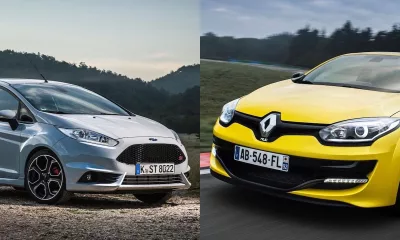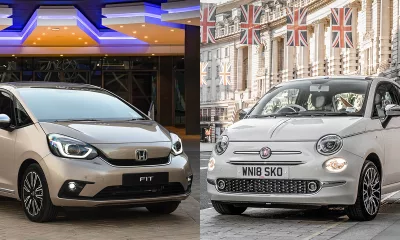We take a closer look at the first and last variants of Volkswagen’s iconic Golf 1…
Model: Volkswagen Golf 1500 GLS/Volkswagen Citi Mk1
0 to 100 km/h: 12,80 seconds/10,54 seconds
Top speed: 156 km/h/180 km/h
Fuel index: 7,3 L/100 km/7,8 L/100 km (both at a steady 100 km/h)
CAR tests: July 1978/February 2010
Price: R2 570/R113 500
Other road tests: 21 Golfs and CitiGolfs in total
Although the name CitiGolf first appeared in 1984, not too much changed from the very first Volkswagen Golf in 1978 until the end of the line in 2010. Let’s take a look at which elements evolved between CAR‘s first and last tests of the Mk1 Golf.
Packaging
Nothing much changed on the body. The interior remained the same except for a modern facia with central air inlets and a centre drop-down section. Initially, no rev counter was fitted. Higher-specced cars had a large clock added while the 1100 had only a speedometer. Taillamp lenses were enlarged and some cars featured quad headlamps. The 2010 car had a single airbag but the bodyshell was still not up to modern safety standards.
Powertrain
The first 1,5-litre engine was carb-fed and produced 51 kW with 110 N.m; the last used a 1,6-litre, injection-fed engine with 74 kW and 140 N.m. Strangely, the earlier engine could rev a bit higher. Four-speed gearboxes became five.
Suspension and brakes
The items that owners wished would have been improved were steering and braking. Unassisted discs/drums remained throughout, resulting in poor 100-0 km/h stopping times of 3,41 seconds (first) to 3,37 (last). Of course, back in 1978, we stated the car “stops fast and true”. In 2010, because of the mixed bag of lock-ups and respectable stops, this changed to “let’s hope you get it right, then”.
There was still no hydraulic assistance in the steering; it was okay at speed but a workout when parking. Those 13-inch wheels grew to 15 inches and tyres widened from 175/70 to 195/50, adding to that effort required in steering.
Which one to get
If you can find an early example or perhaps one of the last ones sold in 2010, you could have a future collectable classic. It may not be a simple search, though…
What to watch out for
As usual, rust repair will be the most expensive. Mechanical parts are not a problem, nor are CV joints, but carburettor repairs can be costly and missing trim will see you searching through scrapyards. It’s fun if you have the time. Window winder mechanism were known to fail.
Availability and prices
Plenty of these Golfs are available but most have been extensively used and abused. It could take some restoration work to bring your car back to pristine condition. All parts should be obtainable and the simplicity of design will keep your costs low enough to make it worthwhile. Aftermarket parts are plentiful and inexpensive. Get some word-of-mouth recommendations to ensure a reasonable quality purchase.
Interesting facts
Initially, the slot for the optional radio was placed mid-facia. The final position was lower but around 1981 it was at the top. I remember this as tapes would melt in the cassette deck of my 1982 Mk1 VW Jetta when the car stood in blazing Pretoria sun for some time.
An array of small round warning globes (also known as idiot lights) did a decent job of imitating today’s LEDs. These were universally introduced to save money and space previously taken up by gauges for the charging system, oil pressure and coolant temperature. The problem was (and still is), you only know about a problem once it’s already there.
The final batch was limited to 1 000, sold between 2009 and 2010, each with its number attached to the facia.


















